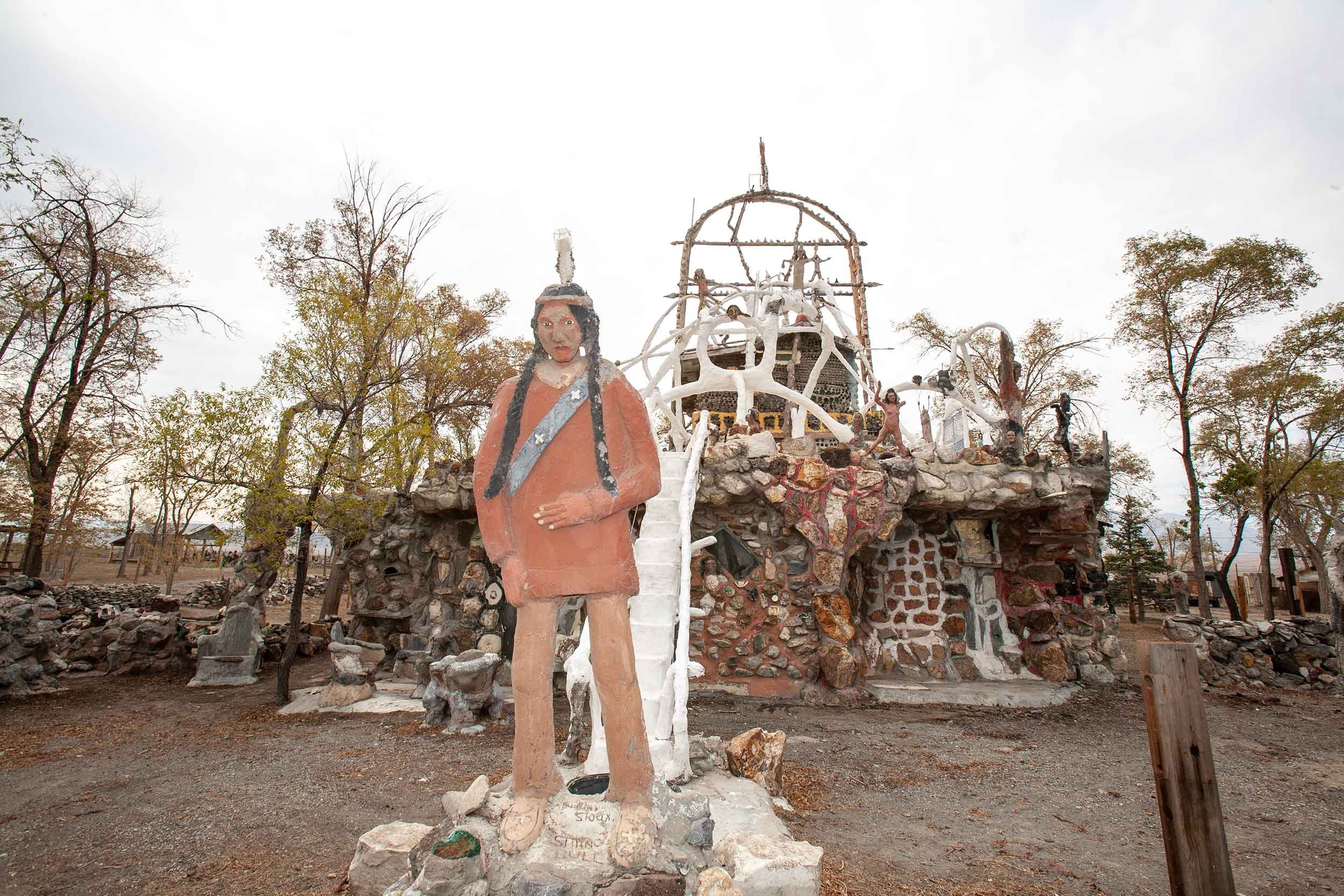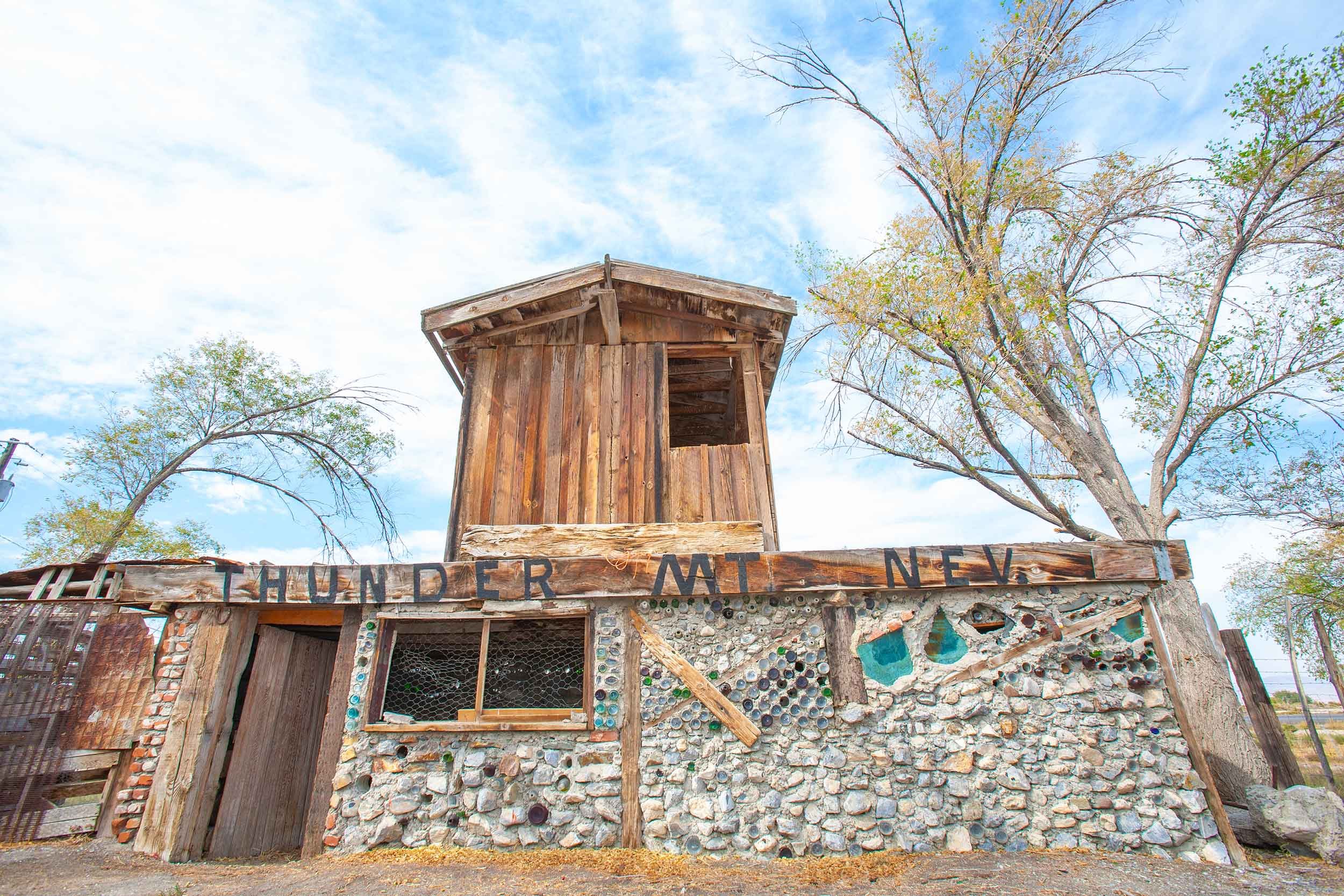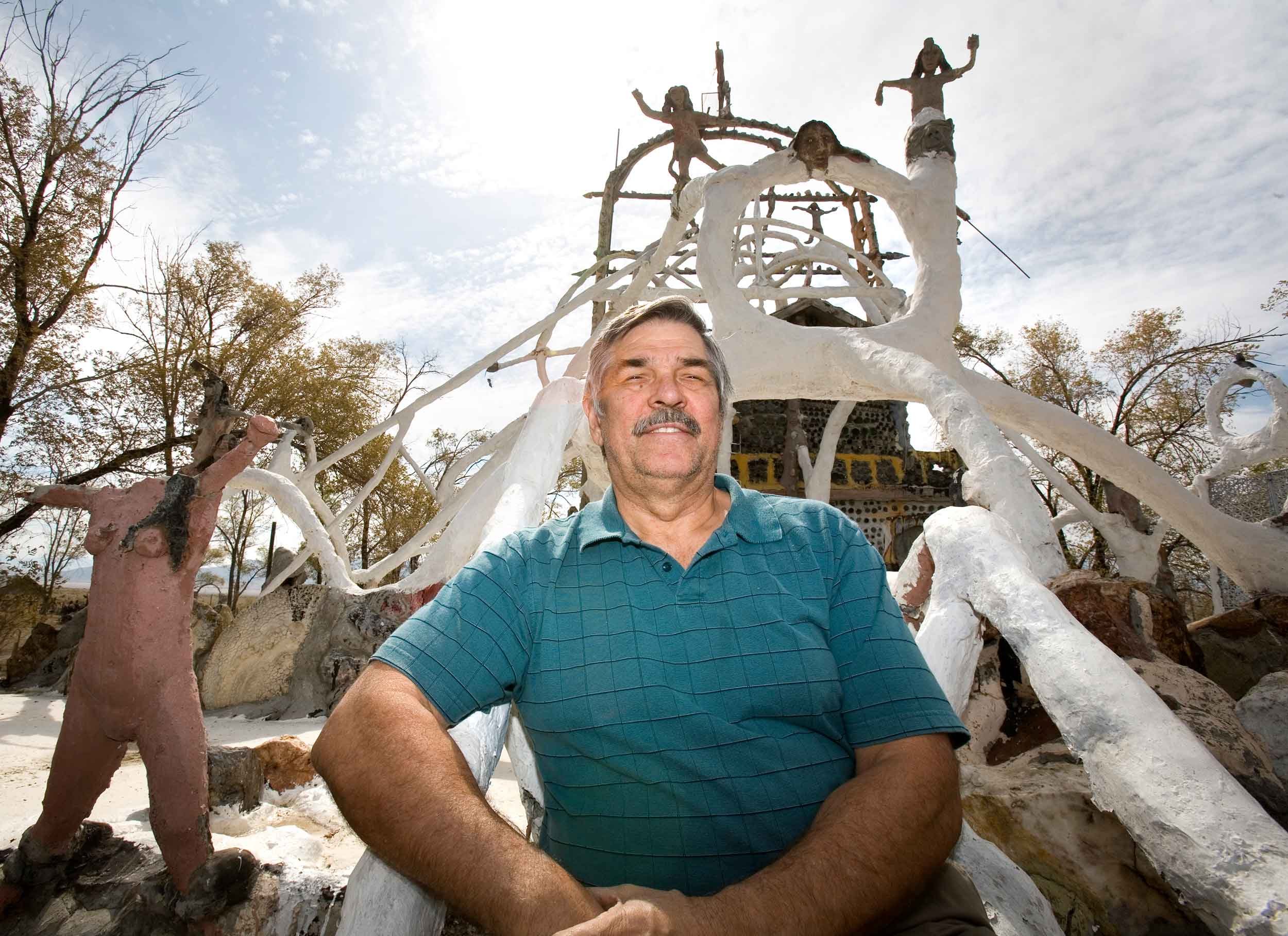“I understand (now) what he was trying to do. There was a deliberate attempt to wipe out the (Native American) culture. He wanted to build something that people could be reminded.”
— Daniel Van Zant, 2008

Thunder Mountain Monument, Imlay, Nevada, 2008
Story and photos by Cat Cutillo
For 40 years, the Thunder Mountain Monument, cobbled out of rusty cars, bottles, and eroding statues, has survived like a bizarre mirage beside I-80. A man known as Chief Rolling Thunder built this 80-foot junk-art monument in 1968 with two goals in mind: to illustrate the plight of Native Americans and to make an ecological statement.
Born Frank Van Zant, the former police officer and WWII vet reinvented himself in his later years and moved his new bride and three young children to the side of the highway in Imlay, Nevada, a remote 120 east of Reno. He spent his retirement scavenging the desert and building Thunder Mountain out of man’s trash.
Eldest son Daniel Van Zant, a man of 22 at the time, recalls his father working from daylight till dark to construct the monument. He said many hippies also gravitated to Thunder Mountain in the 1960’s and 70’s to help with the construction.
“I thought he’d slipped a cog for sure. (I’d say) ‘Why do you want to do this? This is a lot of work. Most people retire and play golf, go fishing,’” recalled Van Zant, who is now the caretaker and owner of Thunder Mountain since his father’s 1989 death.
Van Zant said his father had “no more than a quarter of Creek ancestry” and had always been passionate about Native American culture. Van Zant said his father told some that an old medicine woman predicted he would build Thunder Mountain and told others that an eagle had instructed him to “build a nest” in a dream.
“He was a pretty good storyteller. I never knew how much to believe. I don’t know how much he believed,” said Van Zant, who admitted he didn’t initially share his father’s enthusiasm for the monument.
After Chief Rolling Thunder’s death, many encouraged Van Zant to maintain the property. Despite the five-hour commute, Van Zant and his wife, Margie, have spent most vacations and many weekends during the past 20 years working on the restoration, paid for out of pocket and by private donation. Ultimately, the Van Zants hope to see the monument taken over by a group and preserved for posterity.
“I understand (now) what he was trying to do,” Vant Zant said. “There was a deliberate attempt to wipe out the (Native American) culture. He wanted to build something that people could be reminded,” said Van Zant.



















